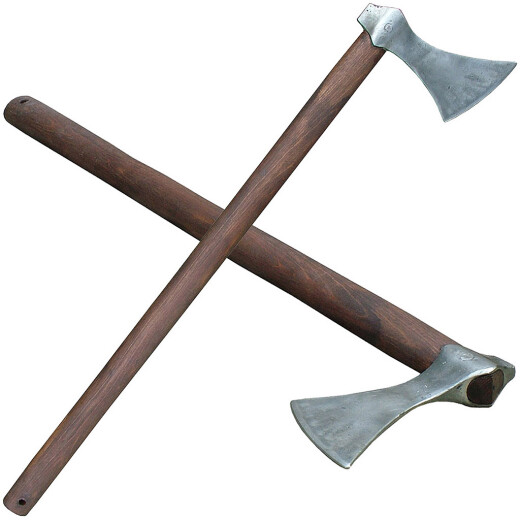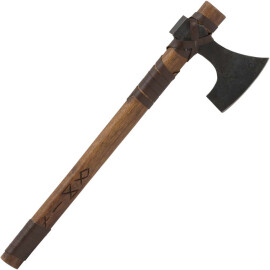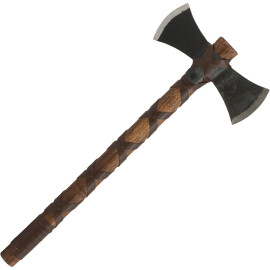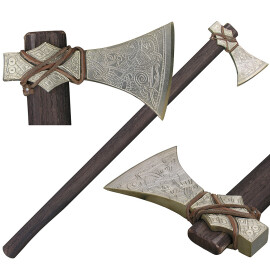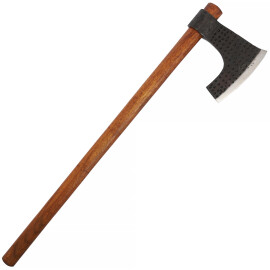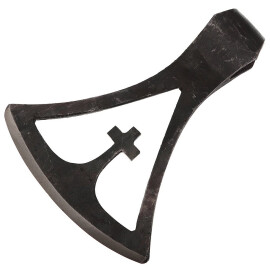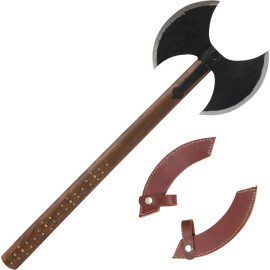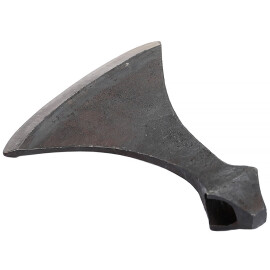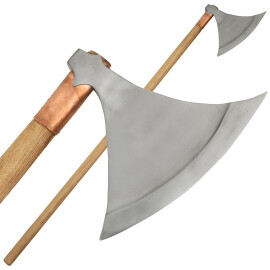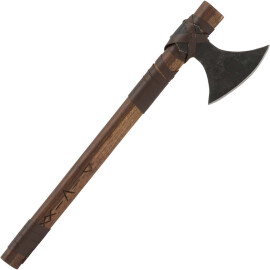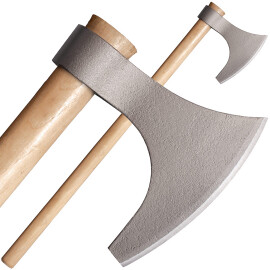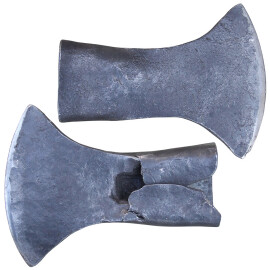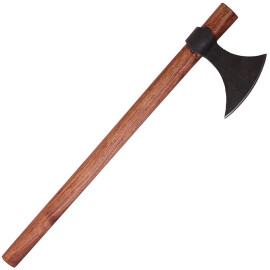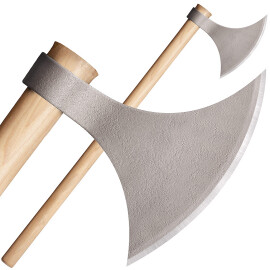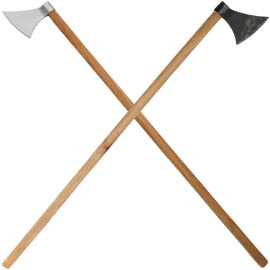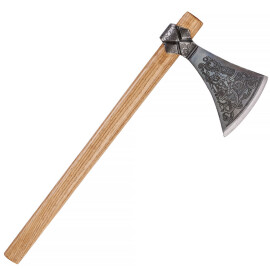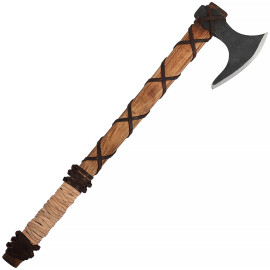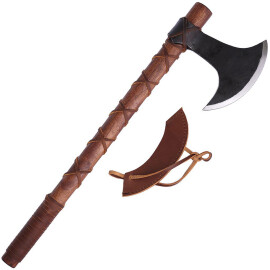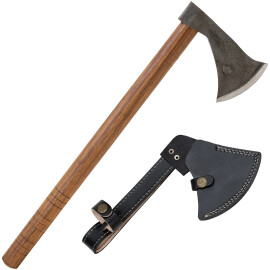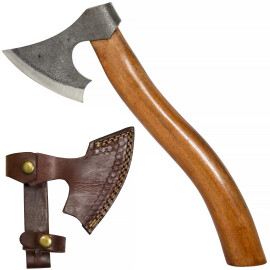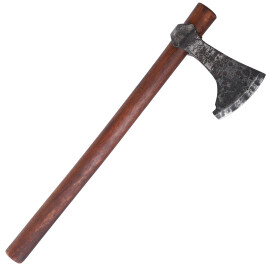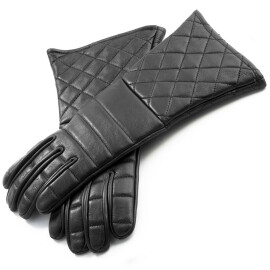Dane Axe Ursula
In the course of the 10-11th. Centuries, the Danish Axe gained popularity in areas outside Scandinavia where Viking influence was strong, such as England, Ireland and Normandy. Historical accounts depict the Danish Axe as the weapon of the warrior elite in this period, such as the Huscarls of Anglo-Saxon England. In the Bayeux tapestry, a visual record of the ascent of William the Conqueror to the throne of England, the axe is almost exclusively wielded by well armored huscarls. These huscarls formed the core bodyguard of King Harold at the Battle of Hastings. The Bayeux Tapestry also depicts a huscarl cleaving a Norman knight's horse's head with one blow. More information...
Dane Axe Ursula
The Dane-Axe is also known to have been used by the Varangian Guard, also known as pelekyphoros phroura (πελεκυφόρος φρουρά), the "axe-bearing guard". One surviving ivory plaque from the 10th century Constantinople depicts a Varangian holding an axe that is at least as tall as its wielder.
- Shaft length approx. 80cm
- Size of the Axe head is approx. 20x12cm
Although the name retains its Scandinavian heritage, the Danish Axe became widely used throughout Europe from 12th.-13th century, as axes gained acceptance as a knightly weapon, albeit not achieving the status of the sword. They also began to be used widely as an infantry polearm, with the haft lengthening to about 6 ft. (2m.). The 13th. and 14th. century also see form changes, with the blade also lengthening, the rear horn extending to touch or attach to the haft. The lengthened weapon, especially if combined with the lengthened blade, was called a sparth in England. Some believe this weapon is the ancestor of the halberd.
Write to our specialist


